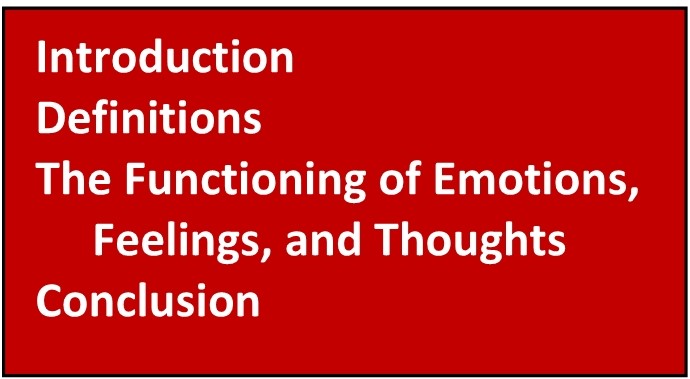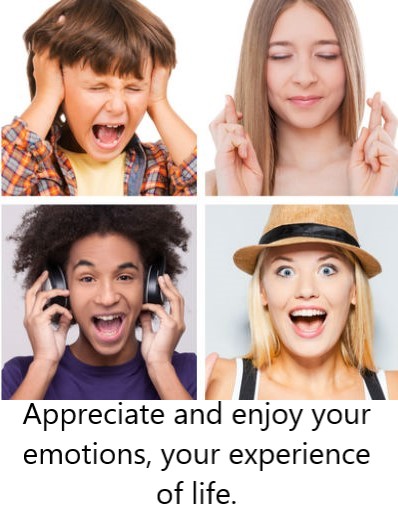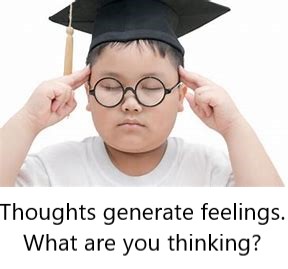Emotions And Feelings: Difference, Definitions, and Functions. Part I
INTRODUCTION 
In this Letter we will define and explore emotions and feelings to understand what they are and how they are different. Separately and together they are crucial aspects of our existence, of our ability to function in the world, and are essential tools for self-mastery. We cannot fully understand emotions and feelings without also understanding thoughts and behavior. These four aspects of our self are immediately available for us to work with. Paying attention to them is all that is necessary to begin exploring them.
One of the most important pieces of our self-exploration occurs when we ask the question, “Why did you do that?” We will learn how to answer that question. This question is one of the bedrocks of therapy and change. It addresses our motivation for doing something.
In this Letter some of the ideas may seem like “common sense.” That is good. There are also straightforward and familiar ideas which tend to be ignored. There are new and profound ideas. We can easily understand many of these ideas but putting them into practice is not necessarily easy.
In this Letter we define emotions, feelings, thoughts, and behavior and begin to explore their functioning. In the following Letter we will use our theory to generate techniques for change.
Point Of Empowerment: Powerful ideas are straightforward and understandable. In their application they challenge us to bring out the best we can be.
DEFINITIONS
An emotion is a combination of thought and feeling. It is composed of a thought and a feeling together but the thought and feeling continue  to exist as a thought and feeling. Emotions are constructed by the brain, and by the subconscious and unconscious minds. We can speculate that emotions are carried by nerves throughout the body as electro-chemical impulses. They are the impulses that are sent to our voluntary muscles, the muscles we have control over. They carry our brains commands to those muscles. This is part of the mechanism that enables us to choose the way we want to move our bodies. Emotions circulate in and out of the brain and the subconscious and unconscious minds. We do not consciously experience emotions. We experience our feelings and thoughts.
to exist as a thought and feeling. Emotions are constructed by the brain, and by the subconscious and unconscious minds. We can speculate that emotions are carried by nerves throughout the body as electro-chemical impulses. They are the impulses that are sent to our voluntary muscles, the muscles we have control over. They carry our brains commands to those muscles. This is part of the mechanism that enables us to choose the way we want to move our bodies. Emotions circulate in and out of the brain and the subconscious and unconscious minds. We do not consciously experience emotions. We experience our feelings and thoughts.
Feelings and thoughts do not exist separately for very long. A thought immediately generates a feeling and a feeling generates a thought, though we tend to produce thoughts first. We may not be aware of the feeling generated by a thought, or the thought generated by a feeling. A thought generates an appropriate feeling that “fits” with the thought. For example: angry thoughts generate feelings of anger, hateful thoughts generate feelings of hate, happy thoughts generate feelings of happiness, and frustrated thoughts generate feelings of frustration. The thought generated by a feeling is sometimes distorted in some way. For example, I may suddenly feel afraid and be driving across a bridge. I then think that I am afraid of bridges even though I have driven across bridges for years. I now have a “bridge phobia.” This is one way that a phobia starts.
Point Of Empowerment: We can deeply appreciate this aspect of life, that thoughts and feelings fit and work together.
The intensity of a feeling, associated with and connected to a thought, determines the intensity of an emotion. Strong feelings make for strong emotions. Weak feelings make for weak emotions. Weak emotions may never get expressed.
Feelings are a certain kind of energy that we experience in our body. They are our actual experience of life. Feelings contain information, a message for us, about some aspect of our life. We need to know how to interpret these messages. The ability to understand the message of our feelings is emotional intelligence. For example a painful (negative) feeling tells us that there is something we need to pay attention to and eliminate, eliminate the cause of the pain. A pleasurable (positive) feeling tells us that there is something we like and might want more of.
There are natural and artificial feelings. Natural feelings are appropriate reactions to a stimulus from within us (internal) or to a stimulus from outside of us (external). Natural feelings are the feelings that contain messages for us pertaining to any life situation that we are facing. “I feel hurt by what you just said to me.” The feeling of hurt tells us that we have been attacked in some way or that some vulnerability within us has been touched by what was said.
Artificial feelings are feelings that we create/invent that substitute for other feelings or hide other feelings. For example, anger can cover many emotions such as hurt, frustration, disappointment, and anxiety. Guilt is another example of an artificial feeling. A healthy conscience functions with healthy shame, feeling ashamed of myself for something I have done and remorse, feeling sorry for what I have done. Guilt can cover healthy shame and remorse and therefore limit the functioning of the best conscience we are capable of.[i]
There are eternal feelings and temporal feelings. Eternal feelings are universal feelings that are not limited to our experiences of them.  Feelings of love, beauty, and compassion are the best examples of eternal feelings. Temporal feelings are related to time and place within our lives
Feelings of love, beauty, and compassion are the best examples of eternal feelings. Temporal feelings are related to time and place within our lives
Thoughts are one of the products of our brain’s activity and our mind’s activity, the conscious, subconscious, and unconscious mind. We can be aware of our thoughts and can change them. The fundamental purpose of thought/thinking is to help us fulfill our needs, the needs of survival, safe/security, belonging/loving, self-esteem, to create/produce/know, self-actualization, and beauty/mystery/transcendence.[ii]
Behavior is how we move our body, how we act. This includes our verbal expressions, what we say and how we say it. Actions are the results of emotional impulses. They are the physical representatives of emotions, the expressions of emotions. Actions are also forms of communication that express our thoughts and feelings. For example, I buy you flowers or give you a gift to express my love.
Behavior, taking action, contains power and is an expression of the internal power we have. Here we define power as the ability to move things, including ourselves and other people. A steamroller has the power to flatten things. A powerful orator has the power to move people. We are most powerful when emotions, feelings, and thoughts are all working together without blocks or contradictions. Powerful does not mean using force which often indicates a lack of power.
Point Of Empowerment: Thoughts and feelings—emotions, drive our behavior.
THE FUNCTIONING OF EMOTIONS, FEELINGS, AND THOUGHTS
The functioning of our emotions, feelings, and thoughts can be classified on a continuum from healthy and functional to unhealthy and dysfunctional. Healthy and functional is the natural state of our emotions, feelings, and thoughts where they operate “on their own,” spontaneously without our control or interference. (This does not mean that we can’t change our emotions, feelings, and thoughts.) Feelings, and therefore emotions, have a brief “life cycle” of increasing in intensity, peaking, then diminishing in intensity. They end, finish, and are complete on their own. In addition, we seek to have awareness, to know, what we are feeling and thinking—to be “mindful.” We seek complete self-acceptance so that we can be intimate, in touch with, with our emotions, feelings, thoughts, our self, and with life.
Emotions, feelings, and thoughts become unhealthy and dysfunctional (don’t do what they are supposed to do) if we interfere with their healthy functioning by using what are called defense mechanisms. We may “defend against” the emotions, feelings, and thoughts that seem to threaten our wellbeing, that seem dangerous. We scare ourselves by thinking that painful, uncomfortable feelings will never end. We may think that a feeling will kill us. We feel guilty about what we feel and what we think.
Our first line of defense is denial—saying that an emotion, feeling, or thought does not exist. Denial is often followed by a secondary defense mechanism like projection, suppression/repression, minimizing, rationalization, substitution, or displacement. Feelings that hide other feelings are used as defense mechanisms. For example:
- You tell me that what I said hurt your feelings. I say, “No I did not say that,” when I did say that—denial. I then say, “You are the one who hurt my feelings,”—projection.
- I think about how furiously angry I got at my child and feel guilty. I then think, “Well, I didn’t really get that angry,”—denial and, “Besides anger at one’s child is normal,”—minimalization.
- I am constantly angry about something. I use my anger to hide all my other feelings.
One of the defense mechanism that we sometimes use is called splitting. We split the feeling from the thought or the thought from the feeling if one or the other seems threatening. For example, I may be so angry at my spouse I think about killing him. I allow the anger but split off the thought about killing her. I deny and repress it, banishing it from my awareness.
A feeling may arise but the thought that generates it seems hidden. In the language of cognitive therapy they are called automatic thoughts. Automatic thoughts often precede the feeling of anxiety. Also, feelings such as confusion, doubt, and ambivalence come from confused, doubting, and ambivalent thoughts. Identifying the thoughts from these feelings can be more difficult.
Point Of Empowerment: If we know what the pairing (emotion) of a thought and feeling is we can anticipate what our behavior might be. This puts us in charge of our behavior by giving us conscious choice.
Emotions
What are the effects of emotions? They:
- Have huge impact on our physical and mental health
- Determine how we feel from moment to moment
- Influence intent and the purpose that expresses intent
- Influence motivation
- Influence dream content
- Shape our relationships with others and with ourselves
- Interact with contradictory emotions resulting in the distress of inner conflict
- Influence our every reaction to what life brings us and our reactions to the consequences of our behavior
- Since emotions drive our behavior, they determined the actions we took that created the life we have and determine the actions we will take to create the life we want.
We frequently ask, “Why did you do that?” This question serves many purposes. The answer to that question requires an exploration of what the person was thinking and feeling at the moment of behaving in a particular way. The answer separates the thought and the feeling allowing us to pursue a greater understanding of each and giving us many choices for initiating change. The question, “Why did you do that?” uncovers motivation—the reason we behave in a certain way. Every action we take has a motivation. Understanding and working with motivation is essential for self-mastery.
Another useful question is, “How did you do that?” This leads us to an understanding of the sequence of actions that we took to intentionally (with awareness) or unintentionally (on autopilot), accomplish something. We can reflect on the emotions, feelings, and thoughts that were involved in each action.
TO BE CONTINUED
CONCLUSION
We have started our exploration of emotions, feelings, and thoughts. In the next Letter we will continue laying the theoretical groundwork for our discussion about putting these ideas to work. We are providing the tools for greater understanding of our self and the tools that can be used to accomplish small, medium, and large change for ourselves.
[i] See chapter 14, Conscience, in The Operating Manual for the Self. This is a thorough exploration of the functional and dysfunctional conscience. There are recommendations for a new, loving, conscience that will serve humanity better than our current conscience.
[ii] Thoughts are also expressions of our consciousness, a product of the activity of our consciousness. Can we define consciousness? Not very clearly other than to say consciousness (thoughts) and energy (feelings) are the products of life itself. Can we define life, not really, only to say that through an observation we can say that something is alive or not.
